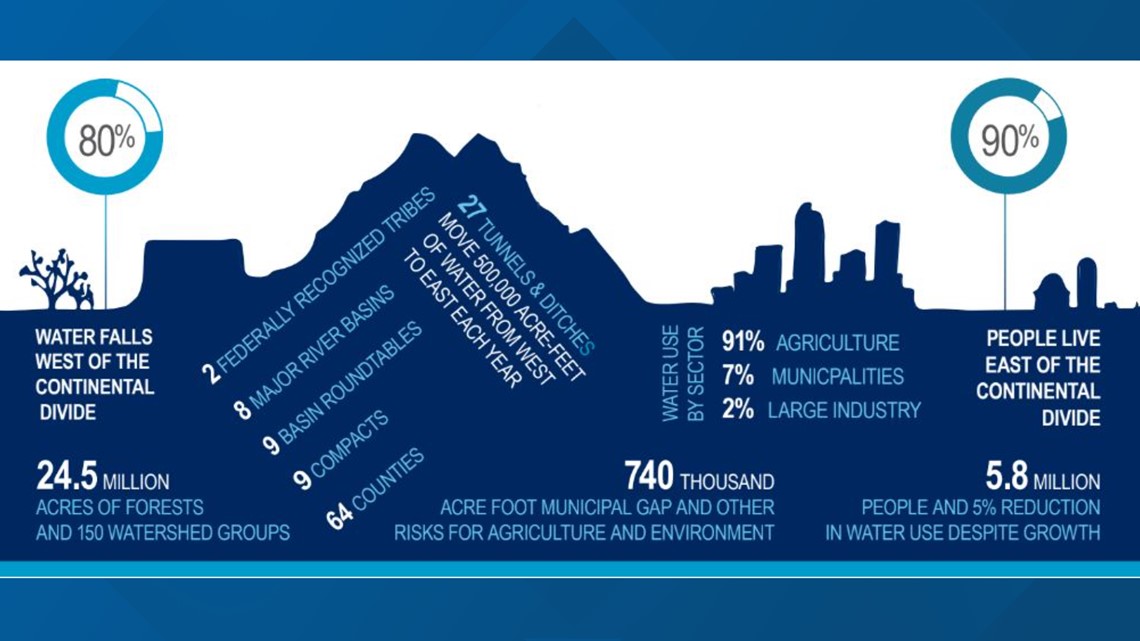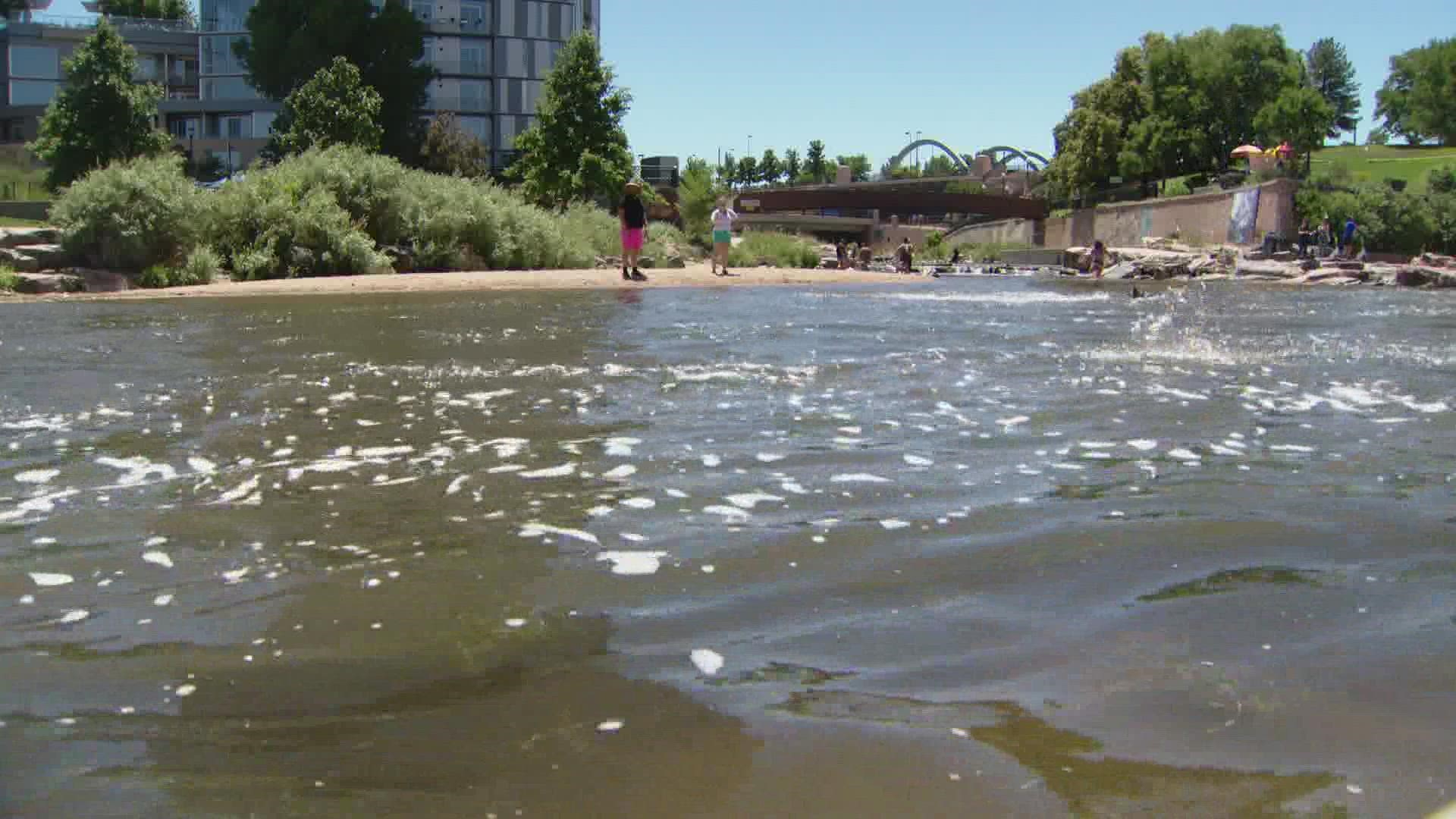COLORADO, USA — Colorado's water supply is at risk, and the state has a new blueprint for what we should do about it.
It's called Colorado's Water Plan, a 239-page document written by the Colorado Water Conservation Board. The state just released a new draft of it on June 30th and wants to hear from you.
"We've got pretty massive water supply demand imbalances in this state," said Alex Funk, director of water resources at the Theodore Roosevelt Conservation Partnership. "The plan’s really designed on setting out the list of tools on how we close those gaps in a way that reflects the different water use values that we hold dear in this state.”
To illustrate some of those gaps, the Water Plan shows there could be a 240,000 to 740,000 acre-feet of water shortage in the municipal and industrial sectors in less than 30 years.
"We're seeing less water happen faster than I think what we anticipated and so I think the state's going to have to really focus on how we scale those conservation efforts over a faster time period," said Funk. "Right now, we need to put more resources toward that demand reduction than other 'pie in the sky' big structural solutions that may never materialize.”
He said overall, the Water Plan draft is solid. But Funk wants to see more concrete steps on how to reduce water demand in the final version of the plan.
"I think we need to be thinking more about how we sustain ag, sustain growth, sustain development while reducing both the water footprints in those sectors," he said. “More concrete steps and certainly more resources reallocated to reducing demand and conservation.”
The Colorado Water Conservation Board shows the biggest percentage of water used in Colorado, 91%, goes to the agricultural sector. Instead of hoping for more water conservation, Funk wants to see the state steer them in the right direction.


"Maybe growing crops that require less water or working with farmers to transition to more efficient irrigation inputs or something along those lines," said Funk. “I think right now we’ve been largely relying on, again, voluntary adoption through that sector. I’m not saying that necessarily has to change, but it would need to certainly scale up to actually make a difference and fairly rapidly given what we’re seeing, especially on the Western Slope and with the Colorado River and the requirement that we have to think about how we reduce our pressure on that system to ensure we’re adequately sharing water with the other states.”
He said the plan also shows a bleak trajectory of climate change -- hotter and drier conditions that we're already experiencing -- meaning even less water.
“As we grow in population or sort of expand housing developments, that we’re doing so recognizing those water constraints or limitations," said Funk. "Looking at things like native landscaping or turf removal programs or more efficient appliances."
He said water recreation and healthy rivers are also an important part of the state's future that need attention.
"We’d certainly like to see some more recognition in the final update on some more resources and tools to help ensure we have adequate flows to support that water-based recreation moving forward especially in light of climate change," said Funk.
He said despite all this, he remains cautiously optimistic about the state of Colorado's water supply if the state takes specific steps to protect it.
"When we're talking about funding, we need to make sure that's very strongly aligned with conservation and efficiency investments," he said. “I’d say overall it’s a good plan. Certainly, more attention towards how we can maybe develop some discrete steps to how we actually navigate this, but overall we think it’s a solid start and look forward to the public comment process.”
Public comment on Colorado's Water Plan is open until the end of September. The state plans to release a final draft at the end of the year.
SUGGESTED VIDEOS: Latest from 9NEWS

